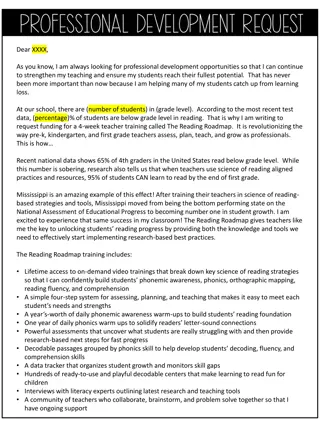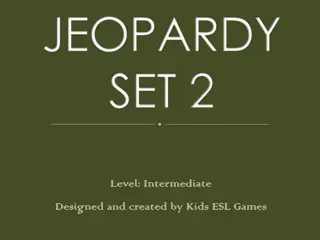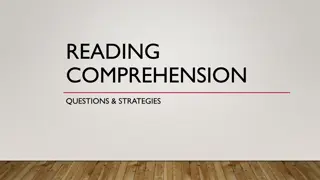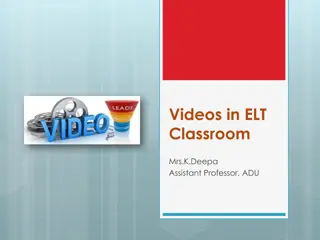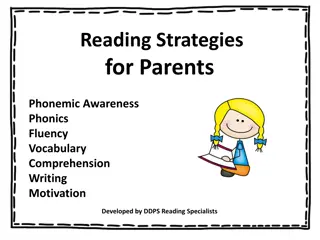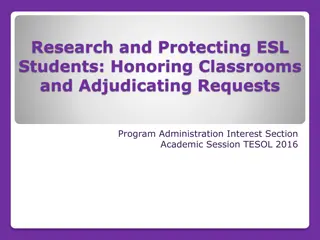Enhancing ESL Learning Through Interactive Reading Strategies
Integrating reading activities in communicative ESL classrooms is crucial for fostering language skills. Reading can be conducted both inside and outside the classroom, with in-class activities like monitoring student reading, assisting students, teaching reading skills, and encouraging pair work. Reading in pairs promotes discussion, summarizing exercises, and expanding on texts. Despite common challenges like finding reading boring or irrelevant, teachers can utilize top-ten lists to make reading engaging and memorable. Sample top-ten topics like strange wars or stupid criminals can provide interesting content for students to analyze and discuss.
Download Presentation

Please find below an Image/Link to download the presentation.
The content on the website is provided AS IS for your information and personal use only. It may not be sold, licensed, or shared on other websites without obtaining consent from the author.If you encounter any issues during the download, it is possible that the publisher has removed the file from their server.
You are allowed to download the files provided on this website for personal or commercial use, subject to the condition that they are used lawfully. All files are the property of their respective owners.
The content on the website is provided AS IS for your information and personal use only. It may not be sold, licensed, or shared on other websites without obtaining consent from the author.
E N D
Presentation Transcript
Ideas on Integrating Reading into the Communicative Classroom Fred Poole
Should reading be done in the classroom or outside of the classroom?
Importance of Reading IN the classroom Monitor student reading Assist students Teach reading skills * Pair work
Reading in Pairs allows for Discussion on the text Summarizing exercises Expanding on the reading
Why do teachers often avoid reading in the classroom?
Common problems in teaching reading Reading is boring Reading is irrelevant Reading is too long/hard Students want to speak Limited materials
Top Ten List Reading
Why use Top Ten Readings? Interesting information Extremes are easy to remember Inexhaustible resource Short and simple Lots of room for student interaction Summary Opinion Analysis Comparison
Sample Top Ten Topics Top ten strange wars Top ten stupid criminals Top ten dangerous animals Top ten expensive houses Top ten exotic foods
Sample Reading Top Ten Stupid Criminals 1. Lottery Thief Sets Himself on Fire ROME, GA June 2 A convenience-store thief got away, but the video from the security camera told a strange, strange tale. A man broke into the store overnight, and tried to cover his tracks by burning the place down. He threw charcoal lighter fluid around, but by the time he ignited it, the fumes had permeated the store, and he set himself on fire. While in flames, he grabbed a roll of lottery tickets and fled. At the time of the story, police were looking for a man with facial, neck, and possibly wrist burns. 150_arson
Sample Reading Top Ten Stupid Criminals 2. Ten Hours Stuck in Restaurant Vent 150_stuck2 HILLSBOROUGH COUNTY, FL June 8 An employee of the Lucky Buffet noticed a strange sight on arriving at the restaurant. There were legs hanging out of a vent over the grill! 45-year-old Billy Jordan had tried to enter the restaurant the night before by climbing through the ductwork, but became stuck and stayed there for ten hours. Hillsborough County Fire Rescue workers used a rope to pull Jordan back out through the roof, after which he was arrested for burglary.
Top Ten Reading = Step One Pre reading discussion Top Ten Stupid Criminals 1. What types of crimes are there? Example murder theft.. What else? 2. What are some recent crimes that you have heard about? 3. Are there any famous crimes in your culture? 4. How do criminals usually get caught? 5. Is crime a problem in your city?
Top ten reading = Step Two Read in Pairs Why read in Pairs Negotiation of Meaning Helps students remember new vocabulary Students become teachers Students are more interested Words we don t know Actual Meaning Guess #1 Guess #2
Top ten reading = Step Three Summarize Each pair will get 5 minutes to retell the story in their own words. Think of these questions when summarizing your story: What was the intended crime? Was it successful? What problems did the criminal have? What should the criminal have done? Questions will vary depending on skill you want to develop Scanning Analysis Inferences Etc. ignore new l2 words. (Chio, 2009) The summary tasks were generally more likely than the comprehension question tasks to make unknown words salient to the learners and lower learners tendency to
Top ten reading = Step Four Re-tell your story to other groups Other groups take notes/ask three questions If you don t know the answer, first skim the article, if the article doesn t have the answer then take a guess. Group 1 Group 2 Who was the criminal? What did the criminal try to do? What went wrong in the story? If the criminal got caught, how did he/she get caught? Your own question #1 Your own question #2 Your own question #3
Top Ten Reading = Step Five Look at the stories you just heard, now pick the three worst criminals. Be ready to support your opinion. Ranking Reasons #1 #2 #3
Top Ten Reading = Step Six Homework Do research about silly criminals in your own country. Write a one page summary of the story. Write one page about how you would have done the crime differently.
What did you like? What didn t you like? What would you change to improve this activity?
Strange News Reading Keal Pontin's 23 Goats Were Stolen Using Duct Tape Naked Man Jumps In Pool With Children, Breaks Officer's Arm Wis. College Student Helps Pay Tuition by Eating http://www.huffingtonpost.com/weird-news/
Strange News: Step One One pair of students read the article Other pair looks at headlines and writes questions
Strange News: Step Two Reporters (students who wrote the questions) will ask questions regarding the headlines Eyewitnesses (students who read the articles) will answer the questions according to the article, if the article does not have an answer the eyewitness should infer what they might have happened.
Strange News: Step Three Reporters will report back to the class what happened in the story.
Strange News: Step Four Homework: Reporters will write a page news article on the strange story. Optional: next day compare the news story to the original story.
What did you like? What didn t you like? What would you change to improve this activity?
Sample Readings Compare and contrast superstitions Compare and contrast religions Compare and contrast color s abstract meaning Compare and contrast folktales Compare and contrast common hobbies
Sample Readings Common Chinese Superstitions Chinese superstitions still rule the hearts and minds of the majority of the Chinese people. They appear so westernized and modernized at first glance, but still, many of their larger decisions, they will seek help from a soothsayer, choose auspicious numbers, or hire a feng shui expert for their opinion. The wonderful world of Russian superstition When I accidentally stepped on a Russian friend s foot for the first time, he returned the favour within seconds. After being questioned on the rapid reaction, he said it was to ensure that the two of us don t get into a fight in the future! This was my entry into the world of Russian superstition. This rationalist insisted that he lost many a friend simply because he stepped on their feet at some point or the other. Coming from a country where people s superstitious beliefs can drive a real rationalist insane, I laughed at his belief that a 5-year long friendship could be broken because of me stepping on his foot. Such types of superstitious beliefs are common in Russia.
Culture Comparison: Step One Discuss your own culture in this context What do you think you know of other cultures? 1. What superstitions exist in your culture? 2.Where did they come from? 3. Are you superstitious? Why or why not? 4.Do you know any other superstitions from other countries?
Culture Comparison= Step two In pairs read about other cultures superstitions. Take notes as you go. What is the superstition? Details
Culture Comparison= Step three Pairs rotate between stations, each station has two groups of people they must fill out the following chart together. Chinese Culture Both Russian Culture
Culture Comparison: Step Four Homework: Write one page comparing and contrasting superstitions from two cultures that you learned about today. You cannot use your own culture or the culture that you read.
What did you like? What didn t you like? What would you change to improve this activity?





